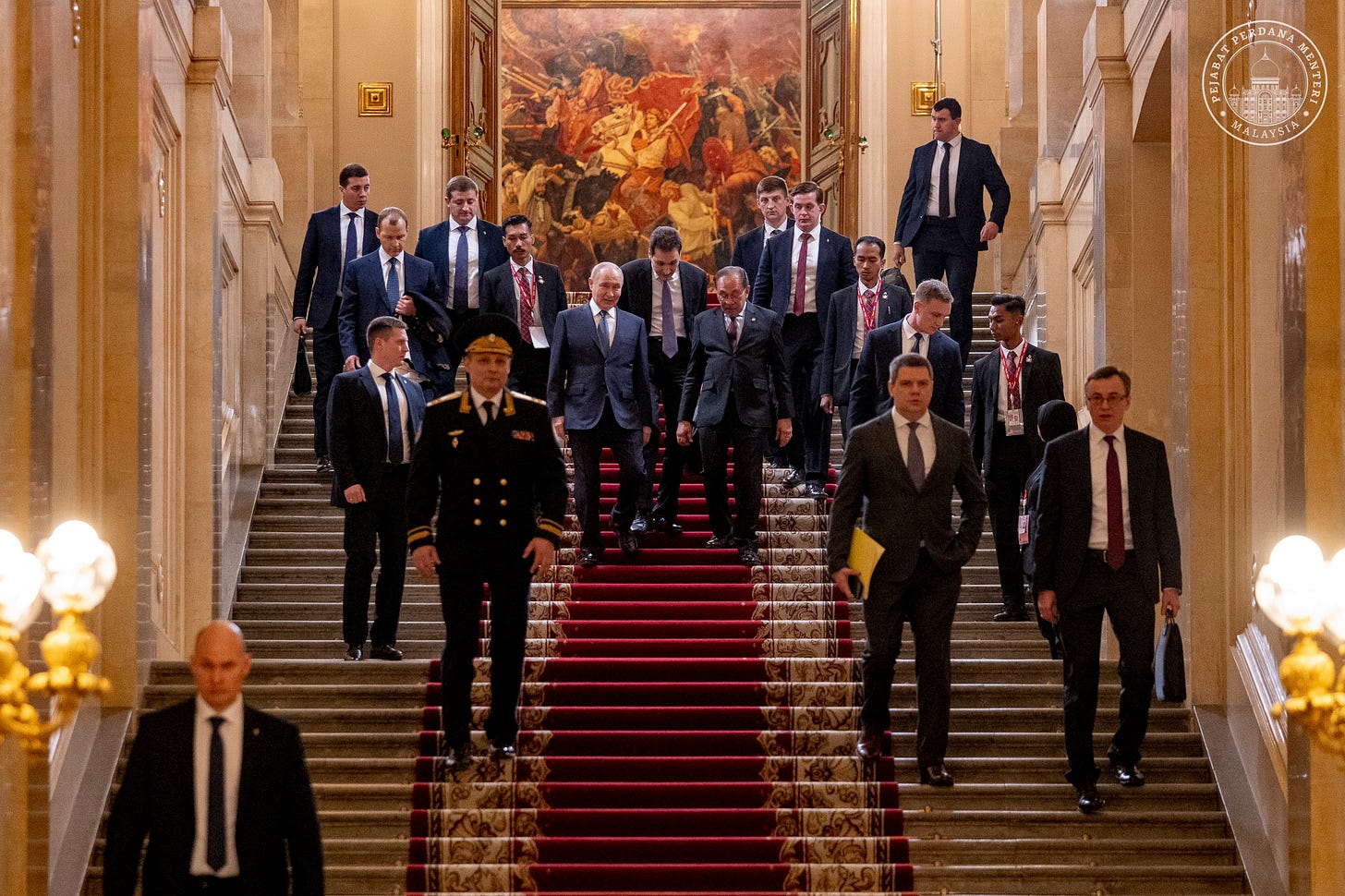Review: Putin, Russia and Kremlin Southeast Asia Futures
New book forecasts trajectory of Russia's engagement with Southeast Asia and ASEAN under Vladimir Putin and implications for the Kremlin's own pivot to Asia.
A new book forecasts the trajectory of Russia's ties with Southeast Asia and the Kremlin’s wider pivot to Asia under Vladimir Putin and beyond.
WonkCount: 1,568 words (~7 minutes)
Review: Putin, Russia and Kremlin Southeast Asia Futures
Context
“[I]t is a major and great prize for the people of Malaysia if we can have President Putin in Malaysia as soon as possible, or at the latest, during the ASEAN Summit in October,” Malaysia Prime Minister Anwar Ibrahim noted following talks with Russia President Vladimir Putin earlier this month1. The talks were just one of several datapoints in the Kremlin’s ongoing engagement in Southeast Asia even as it lags other partners on metrics like economic heft and is constrained by challenges elsewhere such as in the Russia-Ukraine war. The focus on Russia’s regional position has also been reinforced by wider dynamics such as BRICS expansion and Moscow’s evolving ties with other major powers including China and the United States.
Select Key Recent Geopolitical and Geoeconomic Developments in Russia-Southeast Asia Relations
A new book Putin’s Russia and Southeast Asia by scholar Ian Storey assesses the future trajectory of Moscow’s ties with the region2. The book is a welcome addition to the subject of Russia-Southeast Asia relations that has not seen a major book-length study in decades even amid past contributions from scholars such as Anton Tsvetov and recent books on aspects like Sino-Russian ties such as Putin’s Turn to the East in the Xi Jinping Era by Gilbert Rozman and Gaye Christoffersen3. Putin’s Russia and Southeast Asia argues that despite Russia’s limitations, its influence in Southeast Asia nonetheless bears watching given historical legacies, global great power attributes and Moscow’s role as an “option” amid intensifying major power competition4. “The future of Russia’s relations with Southeast Asia depends largely on Russia’s political and economic development over the coming decades than on the region’s future,” Storey notes before laying out what to expect in Russia’s future Southeast Asia ambitions as well as wider foreign and domestic policy dynamics in areas ranging from nuclear power collaboration to Arctic contestation5.
Analysis
Putin’s Russia and Southeast Asia also forecasts the outlook for Russia’s foreign and domestic trajectory in the coming years and how it is likely to affect its approach to Asia in general and Southeast Asia in particular (see originally generated ASEAN Wonk table below for a summary of influence assessments and priority pillars, along with major coming datapoints to watch. Paying subscribers can also read the rest of the “Analysis” section and “Implications” section looking at how these dynamics play out in the future).





